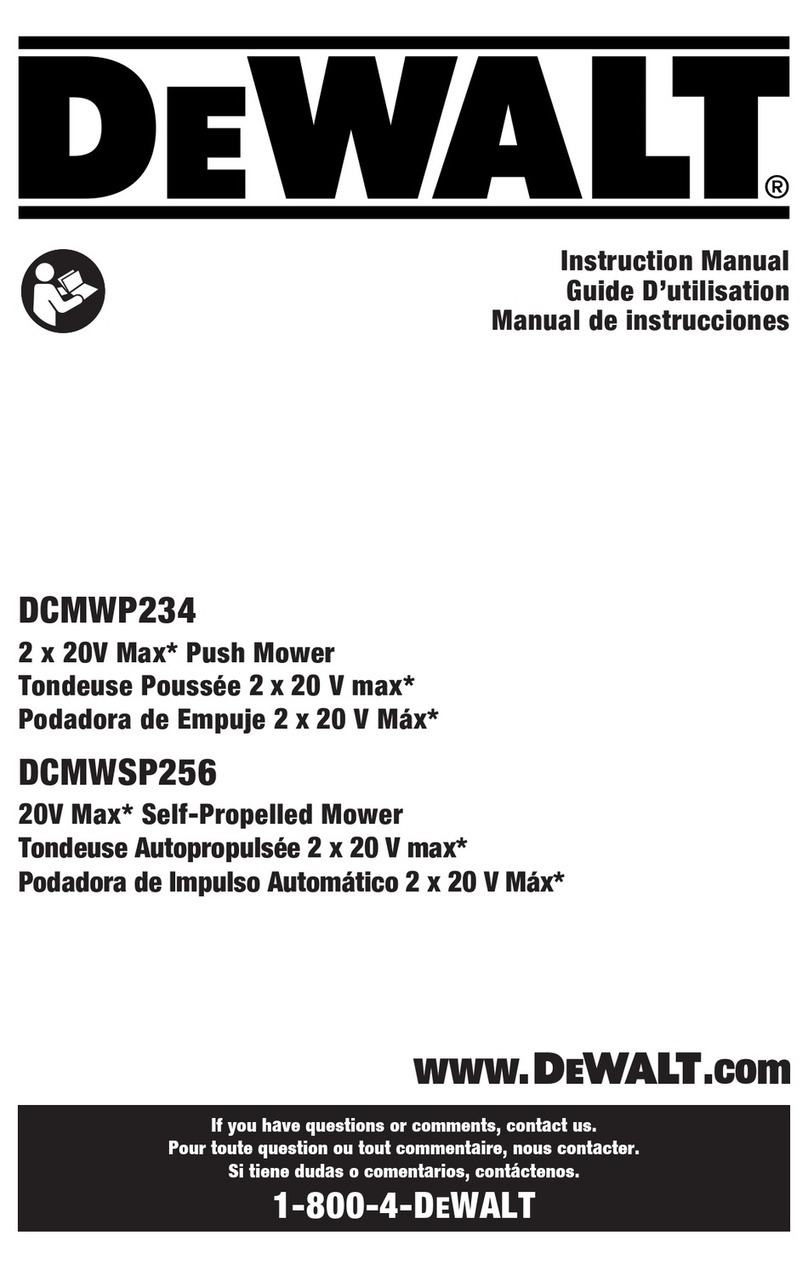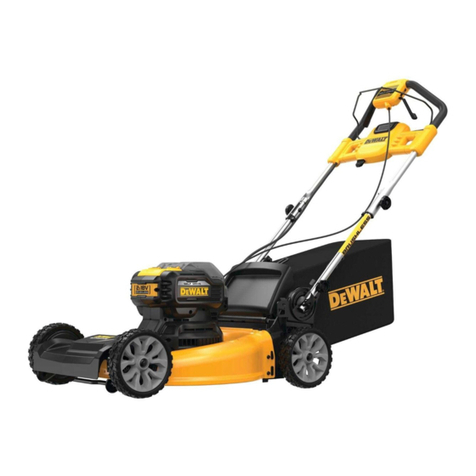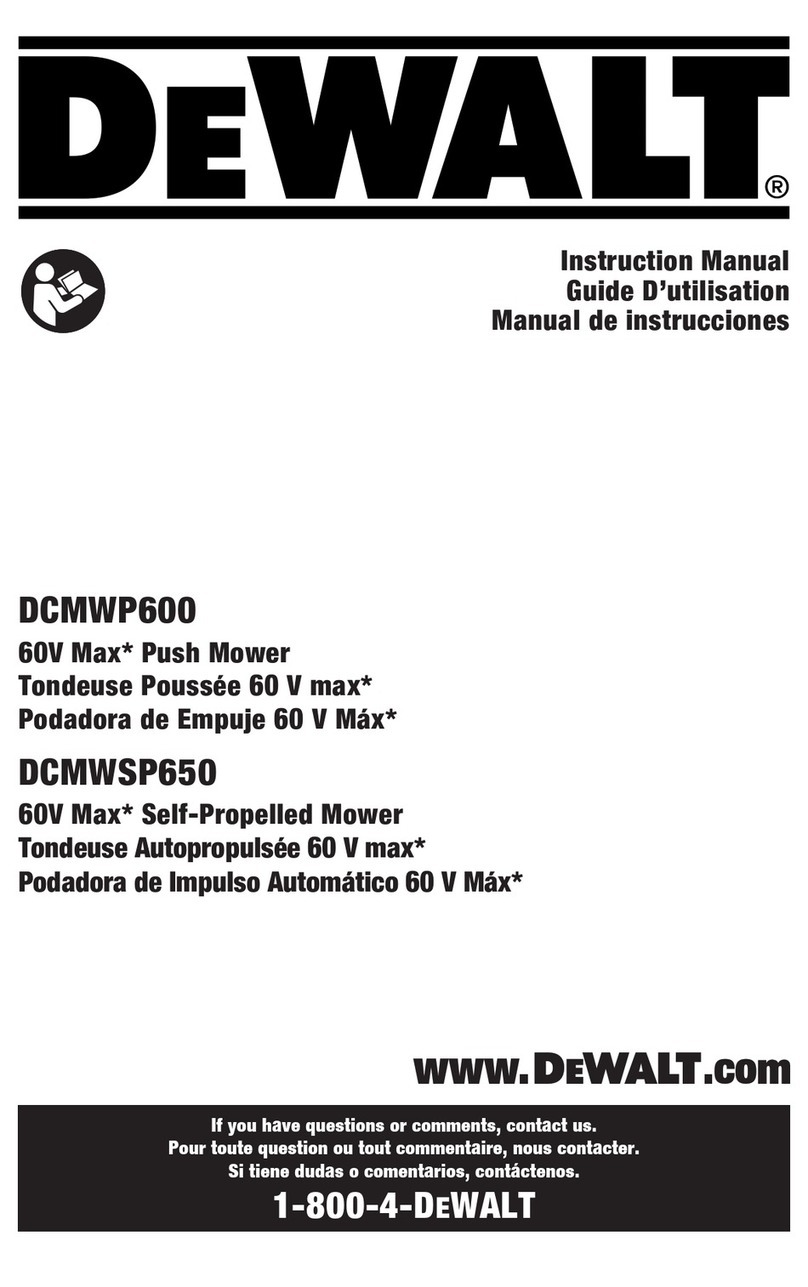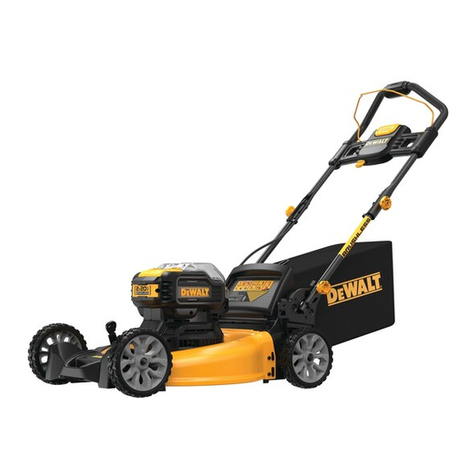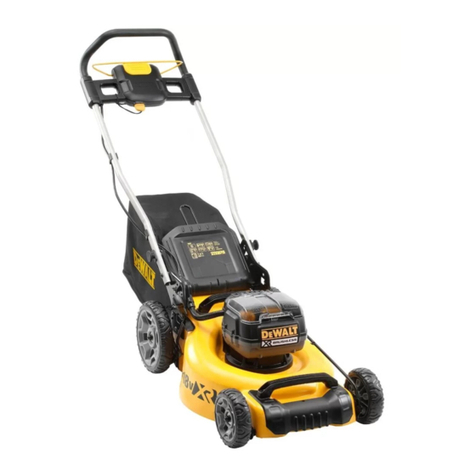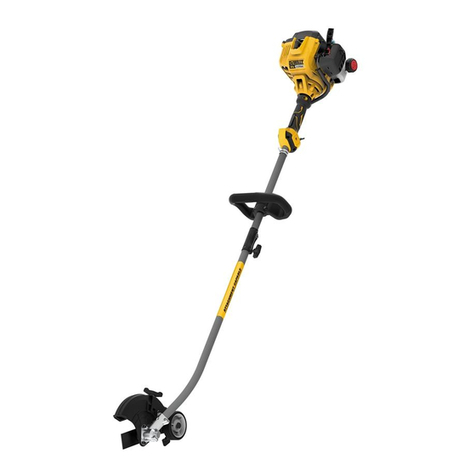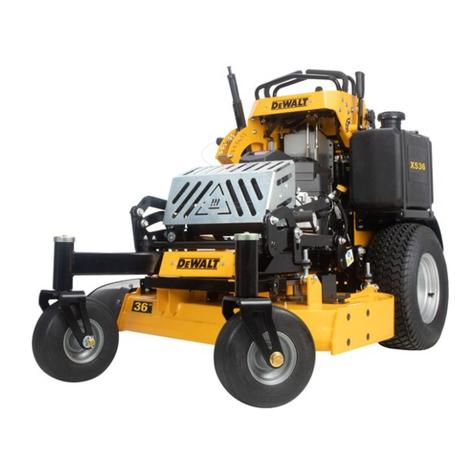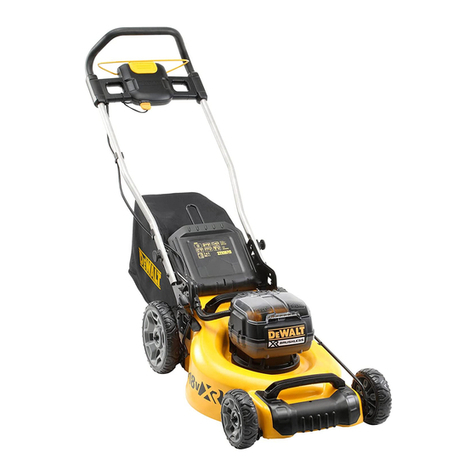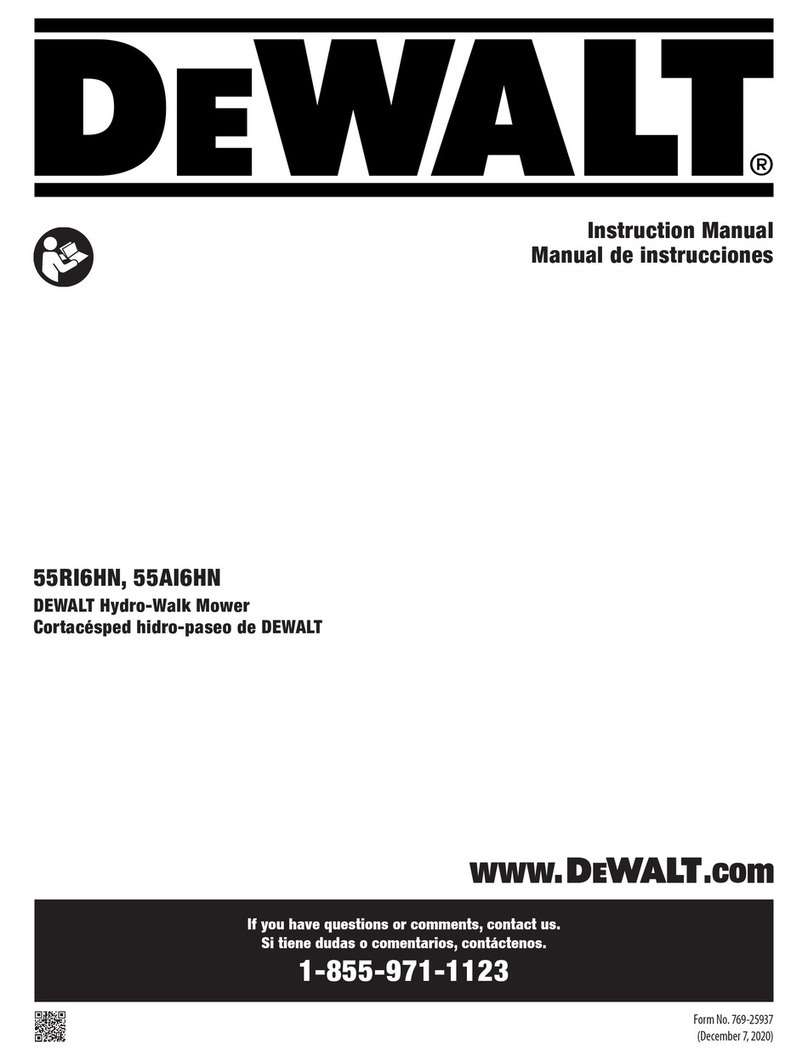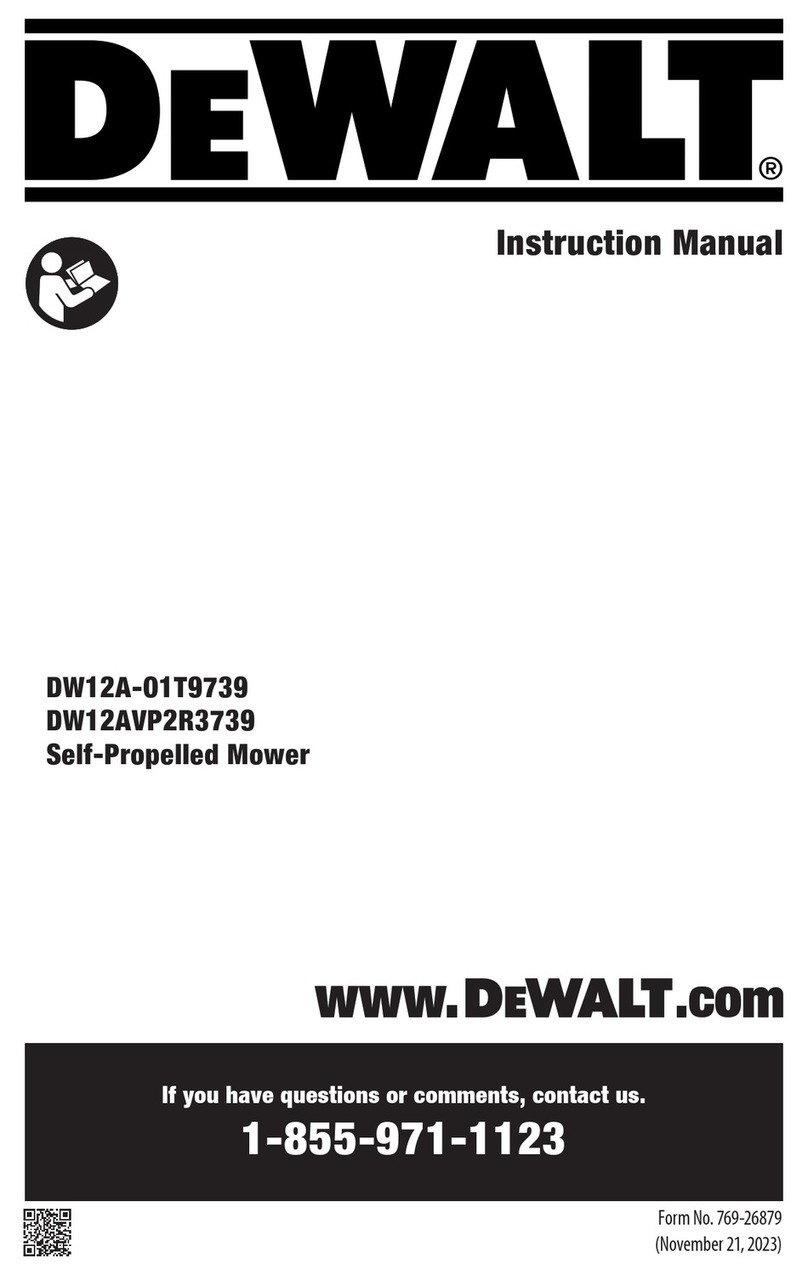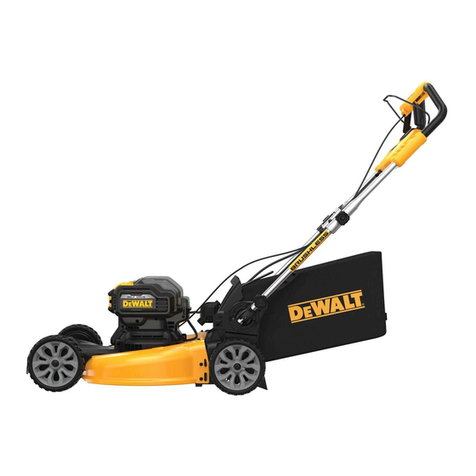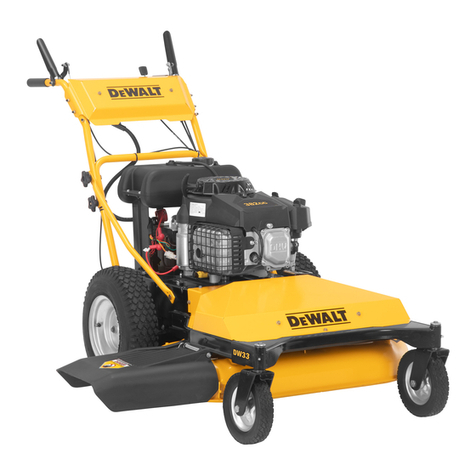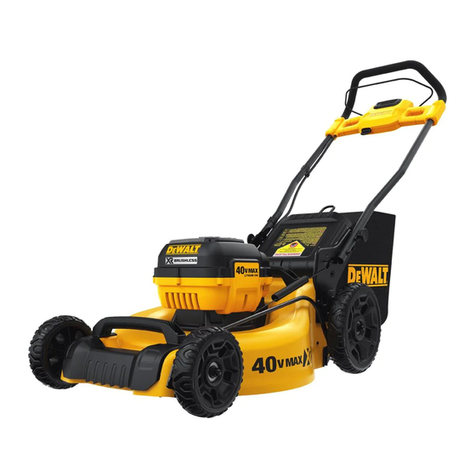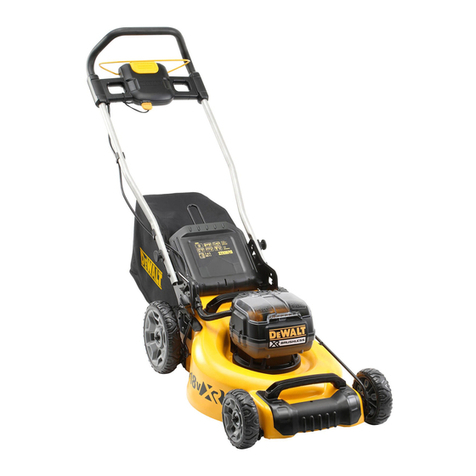
ENGLISH
8
Important
Safe Practices for
Pedestrian‑ControlledMowers
This machine is capable of amputating hands and feet and
throwing objects. Failure to observe the following safety
instructions could result in serious injury or death.
General Information
1 . Read, understand, and follow instructions and warnings in
this manual and on the machine, engine andattachments.
2 . Only allow operators, who are responsible, trained, familiar
with the instructions, and physically capable to operate
themachine.
3 . Do not operate the machine while under the influence of
alcohol or drugs.
Preparation Before Operating
1 . Clear the operating area of any objects which could be
thrown by or interfere with operation of the machine.
2 . Keep the area of operation clear of all bystanders,
particularly small children and pets. Stop the machine and
attachment(s) if anyone enters the area.
3 . Do not operate the machine without the entire grass
catcher, discharge chute, or other safety devices in place
and functioning properly. Check frequently for signs of wear
or deterioration and replace as needed.
4 . Wear appropriate personal protective equipment such as
safety glasses, hearing protection, respiratory protection
and footwear.
Operating
1 . Only operate the machine in daylight or good
artificiallight.
2 . Avoid holes, ruts, bumps, rocks, or other hidden hazards.
Uneven terrain could overturn the machine, or cause
operator's loss of balance or footing. Tall grass can hide
obstacles. Stay behindhandle.
3 . Do not put hands or feet near rotating parts or under the
machine. Keep clear of the discharge opening at all times.
4 . Do not direct discharge material toward anyone. Avoid
discharging material against a wall or obstruction. Material
may ricochet back toward the operator. Stop the blade(s)
when crossing gravel surfaces.
5 . Do not pull mower backward unless absolutely
necessary. Always look down and behind before and
while movingbackward.
6. Always release the bail handle to stop the motor and wait until
the blade comes to a complete stop and remove the safety
key and battery packs before cleaning the mower, removing
the grass catcher, unclogging the discharge, when leaving
the mower, when storing the mower, when transporting the
mower, or before any adjustments, repairs orinspection.
7 . If the mower should start to vibrate abnormally, release
the bail handle, wait for the blade to stop and remove
the safety key and battery packs, then check for the cause
immediately. Vibration is generally a warning oftrouble.
• Keep Children Away – All visitors should be kept a safe
distance from workarea.
• Dress Properly – Do not wear loose clothing or jewelry.
They can be caught in moving parts. Use of rubber gloves
and footwear is recommended when workingoutdoors.
• Use Safety Glasses – Always use face or dust mask if
operation isdusty.
• Use Right Appliance – Do not use lawn mower for any
job except that for which it isintended.
• Check for damaged parts.Before further use of the
mower, a guard or other part that is damaged should be
carefully checked to determine that it will operate properly
and perform its intended function. Check for alignment of
moving parts, binding of moving parts, breakage of parts,
mounting, and any other conditions that may affect their
operation. A guard or other part that is damaged should
be properly repaired or replaced by an authorized service
center unless otherwise indicated elsewhere in thismanual.
• Repairs and service. Repairs, maintenance and
any adjustments not specified in this manual should
be performed by authorized service centers or other
qualified service organizations, always using identical
replacementparts.
• Don’t Force Lawn Mower – It will do the job better and
safer at the rate for which it wasdesigned.
• Don’t Overreach – Keep proper footing and balance at
alltimes.
• Stay Alert – Watch what you are doing. Use common
sense. Do not operate lawn mower when you aretired.
• Disconnect Lawn Mower –Remove the safety key and
battery packs from the mower when not in use, before
servicing, when changing accessories such as blades, and
thelike.
• Store Idle Lawn Mower Indoors – When not in use, lawn
mower should be stored in an indoor dry and locked‑up
place – out of reach of children. Remove safety key and
batterypacks.
• Maintain Lawn Mower With Care – Keep cutting edges
sharp and clean for best and safestperformance.
Follow instructions for lubricating and changing accessories.
Keep handles dry, clean, and free from oil andgrease.
• Keep guards in place and in workingorder.
• Keep bladessharp.
• Keep hands and feet away from cuttingarea.
• Objects struck by the lawn mower blade can cause severe
injuries to persons. The lawn should always be carefully
examined and cleared of all objects prior to eachmowing.
• If lawn mower strikes a foreign object, follow
thesesteps:
1. Stop lawn mower. Release the bailhandle.
2. Remove battery packs and safetykey.
3. Inspect fordamage.
4. Repair any damage before restarting and operating
the lawnmower.
• Use identical replacement bladesonly.
SAVE THESE INSTRUCTIONS
